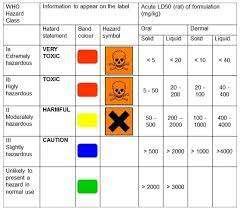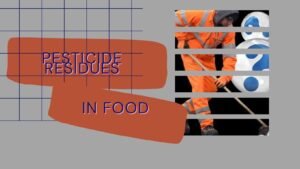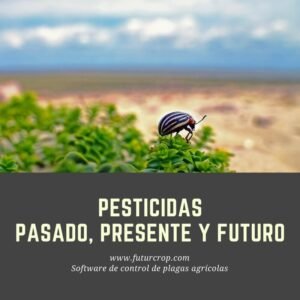The pesticide industry
Global pesticide consumption was estimated at around $59 billion in 2016, 50% of which was in the developed countries of Europe and North America.
This race towards the chemical protection of food began with what is the oldest organic pesticide, DDT (dichlorodiphenyltrichloroethane) which was synthesized by Müller in 1939, for which he received the Nobel Prize in 1948. Its use made it possible to combat major epidemics (typhus transmitted by lice and malaria transmitted by mosquitoes). However, its use is currently restricted in most countries because of its high toxicity and persistence, which causes serious ecological and human health damage.
Characteristics of the agricultural pesticide industry
- The pesticide industry is made up of a few multinationals that synthesize the active products, and a large number of formulating industries that prepare the products for application in the field (emulsions, powders for suspension in water, powders for dry dusting, granules, etc.).
- The pesticide industry is very competitive. The appearance in pests of individuals resistant to a product, due to incorrect use, or indiscriminate and repeated use, makes it necessary to develop new chemical insecticides.
- The appearance of a new product commercially displaces another established product. And the new product has high investment costs that must be amortized through aggressive marketing.
- Brands are the major stakeholders in promoting its consumption and its repeated and persistent use. Because it is a question of sales and profit. This massive use of pesticides has undoubtedly given rise to harmful residues in food and progressive contamination of the environment.
Classification of pesticides
Pesticides is an umbrella term for fungicides (to control fungi), herbicides (weeds), insecticides (insects), etc. There are also other classification criteria: by their mode of action, they are named according to the pests they control: fungicides control fungi, herbicides control weeds, insecticides control insects, etc. Pesticides can also be classified according to the following criteria:
- Mode of action
- contact
- systemic
- residual
- non-residualinhalation
- digestive
- protective action
- repellent action
- eradicating action
- sterilizing.
- For the purpose of their action
- selective
- non-selective.
- By chemical group
- inorganic
- organic
- biological
- Physicochemical properties: (i) explosive; (ii) oxidizing; (iii) extremely flammable; (iv) highly flammable; and (v) flammable.
- By their formulations
- solid formulations
- dry powder
- granular
- bait
- wettable powder
- soluble powder
- micro encapsulated
- water dispersible granules
- liquid formulations
- emulsifiable concentrates
- concentrated suspensions
- concentrated solutions
- liquid concentrates for ultra-low volume applications and aerosols)
- gaseous or fumigant formulations
- By the degree of toxicity: according to the risk that their use represents for human beings. According to their toxicity, pesticides are classified into three classes. Toxicity is established according to the LD50 criterion, i.e. lethal dose 50. This is a statistical estimate of the number of mg of toxic substance per kg of body weight required to kill 50% of a large population of test animals. Because of its toxicity, a minimum time interval between the last application and collection is required.

Toxic pesticides



Short-term toxicity
Toxicity a If we analyze pesticides for their toxicity, they are all toxic to humans and animals, but to varying degrees, depending on the dose and time of exposure.
There are pesticides whose action affects not only pests, but also human biological processes. Such is the case of neurotoxic insecticides that act on nerve impulse transmission, common to insects and humans. This category includes organochlorine, organophosphate, carbamate, pyrethroid and nicotinoid insecticides. Endocrine disruptors are chemicals that alter the human and animal hormonal system.
Studies on pesticide residues in food, based on data from the Spanish Agency for Consumer Affairs, Food Safety and Nutrition (AECOSAN), show that 28% of the foods analyzed contain pesticide residues (mostly within authorized limits). This percentage increases to 45% for fruits and vegetables. For example, 49 pesticide residues were found in pears, 16 of which were endocrine disruptors.
Long-term toxicity
In addition to short-term toxicity, there is another toxicity, the symptoms of which occur after exposure to small doses over a long period of time. But these damages are more difficult to assess and there are no conclusive studies.
Environmental toxicity
Pesticides also have an environmental effect. Most carbamates have low to moderate toxicity to mammals. However, bees are very sensitive to the presence of carbamates. But it is not only carbamates that influence bees. Two recent studies published in the journal Science show that the widespread use of neonicotinoid insecticides has negatively affected bee colonies.
Bees are involved in seed and fruit production through pollination. Bees play a key role in biodiversity. But they also play an important role in food production. According to the Food and Agriculture Organization of the United Nations (FAO), one third of food depends on bees.
Future of pesticides
The European Commission presented in June 2022 a proposal to oblige a 50% reduction in the use of chemical pesticides in the European Union by 2030. Each Member State will propose different national targets, depending on the starting situation of each State. This proposal is part of the objective of creating a sustainable food system, according to the European Green Pact and the strategy “From Farm to Fork.

FuturCrop calculates short-term forecasts of the activity of 179 agricultural pests, based on accumulted temperature thresholds associated with critical stages of their life cycle.
FuturCrop forecasts indicate, for a given day, the stage of the pest’s life cycle and the day for the most efficient treatment.
Links
De la From farm to fork. Strategy within the framework of the European Green Pact.








